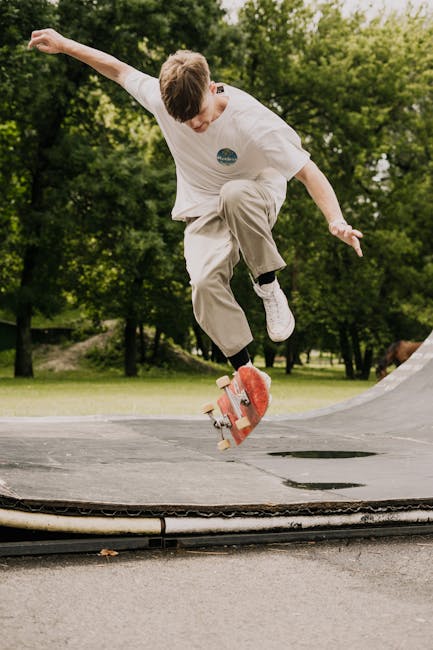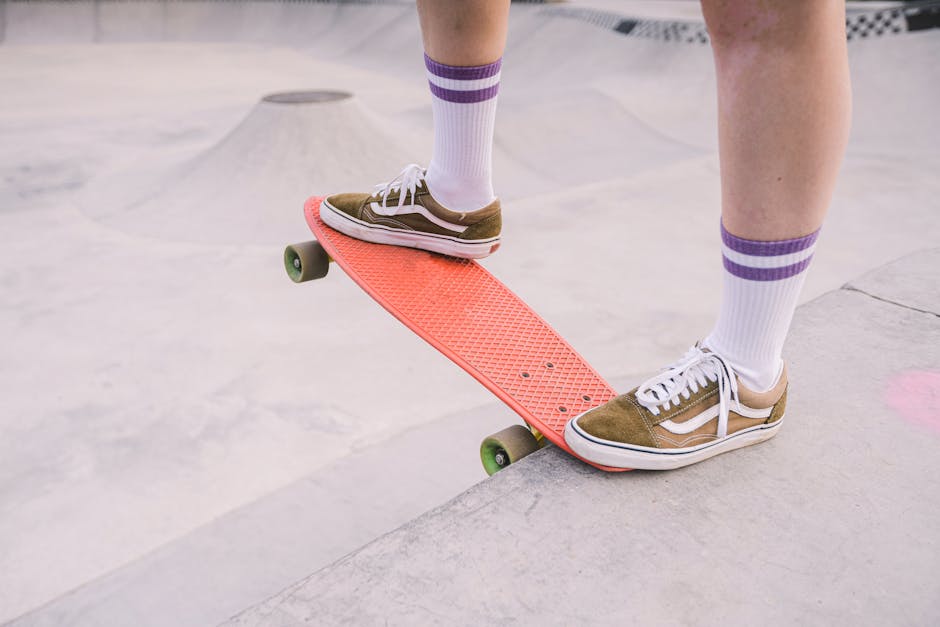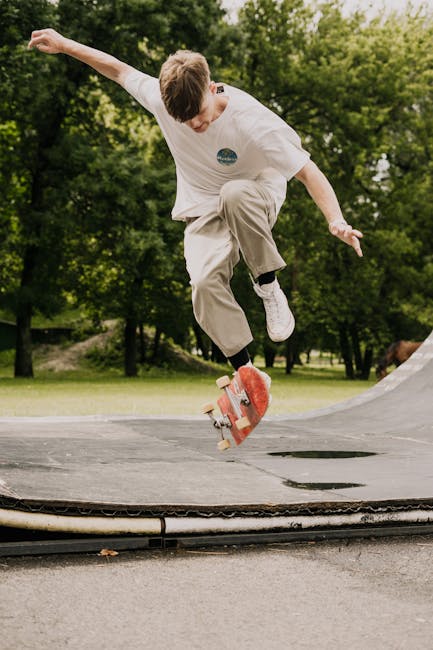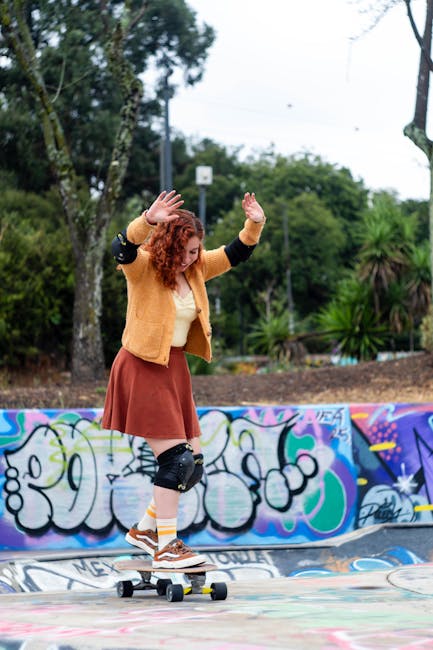Mastering Skateboarding Tricks: A Comprehensive Guide for Beginners to Pros
Getting Started: The Fundamentals of Skateboarding
Before you attempt any fancy skateboarding tricks, it’s crucial to master the basics. This includes getting comfortable with your board, maintaining balance, and learning how to push effectively. Practice pushing consistently, focusing on smooth transitions and maintaining your speed. Get a feel for how the board responds to your weight shifts and subtle movements. Spend time just cruising around to build your confidence and develop a natural feel for the board.

Stance and Balance
Finding the right stance – regular (left foot forward) or goofy (right foot forward) – is paramount. Experiment to determine which feels more natural. Once you’ve established your stance, practice maintaining balance while stationary on your board. This involves subtle adjustments of your weight and the positioning of your feet. Start with small adjustments and gradually increase your balance time.
Pushing and Turning
Mastering the art of pushing is essential for navigating and progressing in skateboarding. Practice pushing with your dominant foot, ensuring a smooth, consistent motion. Avoid overly forceful pushes, which can lead to instability. Gradually integrate turning into your pushing technique, experimenting with different levels of pressure and angle of your feet. Aim for smooth, controlled turns.
Beginner Skateboarding Tricks
Once you’ve grasped the basics, you can start learning some fundamental tricks. These foundational tricks will build your skills and prepare you for more advanced maneuvers.

Ollie
The ollie is the cornerstone of many skateboarding tricks. It involves popping the board into the air using your feet. Start by practicing the pop with your back foot while maintaining your balance. Then, try sliding your front foot up to the board, using your back foot to level the board before landing. Practice this motion repeatedly, focusing on consistency and height.
Manual
The manual is a great trick to develop balance and board control. It involves balancing on your back wheels. Begin by finding your balance point. Then try lifting your front wheels, keeping your body weight centered over the back wheels. This takes significant practice to maintain balance. Practice on a slightly inclined surface to assist with your balance and slowly progress to flat ground. This helps build your balance control on your board.
Pop Shove-it
The pop shove-it is a foundational trick involving rotating your board 180 degrees under your feet. It’s a combination of an ollie and a shove-it, which requires a well-timed foot motion to rotate the board. First master the ollie. Then, practice the subtle flick of your back foot to rotate the board. Initially, focus on getting the board to rotate fully before working on landing. This combination of movements is crucial to mastering this trick.
Intermediate Skateboarding Tricks
Once you’ve mastered the beginner tricks, you can move on to more intermediate-level maneuvers that will challenge your skills and expand your repertoire.
Heelflip
The heelflip is a more advanced version of the flip trick. It involves using the heel of your back foot to rotate the board 360 degrees under your feet and landing it back on your feet. It requires a strong pop and precise flick of the heel. Master ollies and pop shove-its first before attempting this trick. Practice your pop and the flick of your heel, focusing on the timing and power of this complex motion.
Kickflip
The kickflip is another highly popular and challenging trick. It involves flicking your board with the ball of your front foot, causing it to rotate 360 degrees before catching and landing it. The timing and flick of the front foot is crucial here. Master ollies first, and practice the subtle flick with your front foot. Work on consistently popping the board and getting the rotation. This often requires countless attempts, building your muscle memory and technique.
Frontside 180
The frontside 180 involves rotating your body and board 180 degrees while riding. It requires a combination of weight transfer, board control, and timing. Begin by practicing turning smoothly on your board. Then, focus on transferring your weight and rotating your upper body and board to turn 180 degrees. Practice on a slight ramp or incline to assist your momentum.
Advanced Skateboarding Tricks
For experienced skaters, the possibilities are endless. These advanced tricks require significant practice, dedication, and a solid foundation in the basic and intermediate tricks.
Indy Grab
The Indy grab involves grabbing the front edge of your board while airborne during an ollie. This requires precise timing and coordination. Practice your ollies to a height where you can comfortably reach the front edge of your board before trying the grab. The height is crucial for success.
Hardflip
A Hardflip is an incredibly challenging variation of the kickflip. It involves a combination of movements making it notoriously difficult for even experienced skaters. It requires powerful pop, precision flicking and a delicate balance of timing for all involved actions.
Nollie Heelflip
The nollie heelflip involves using your front foot to perform a heelflip. This places a greater emphasis on your front foot control and coordination. The weight transfer needs to be exceptionally precise.
Safety First: Protecting Yourself While Skateboarding
Safety should always be a top priority when skateboarding. Always wear appropriate safety gear, including a helmet, knee pads, and elbow pads. This will help mitigate injuries if you happen to fall. Select a safe environment for practicing and start with smaller tricks on flat surfaces and low inclines. This will help reduce the risk of serious injuries.
Practice and Persistence
Learning skateboarding tricks takes time, patience, and dedication. Don’t get discouraged if you don’t land a trick right away. Keep practicing, and you’ll eventually master it. Focus on consistency rather than the speed at which you progress. Consistent practice leads to more efficient muscle memory and better timing. Celebrate your achievements along the way and keep improving.




